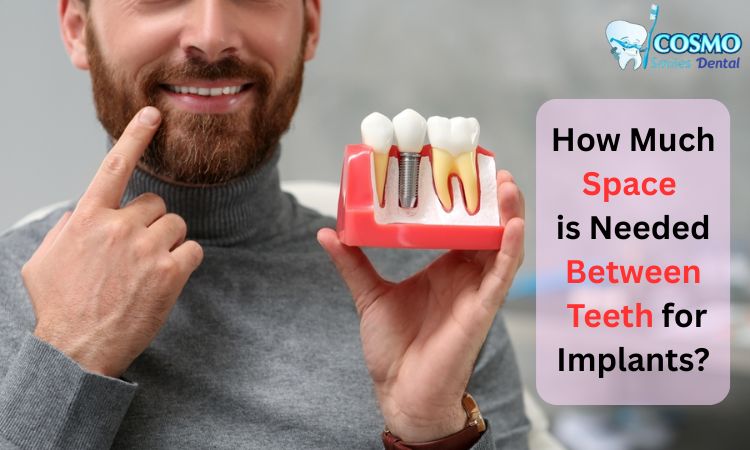Dental implants have become a revolutionary solution for replacing missing teeth, offering a natural appearance and long-lasting functionality. If you’re considering dental implants in Arlington, you may wonder how much space is needed between teeth to accommodate them. Understanding this requirement is critical for ensuring the success of your dental implant procedure.
This article will break down the factors determining the spacing needed for implants, how to prepare your mouth for the procedure, and why proper spacing plays a crucial role in long-term results.
What Determines the Space Needed for Dental Implants?
When planning for dental implants, your dentist or oral surgeon will evaluate several criteria to determine the required space. Some of these include:
1. Width of the Implant Fixture
The most commonly used dental implants have diameters ranging from 3.5mm to 6mm. The available space between your teeth will need to accommodate the selected width of the implant. For adequate stability, most dentists recommend at least 1.5mm of space between the implant and the adjacent teeth.
2. Bone Density and Structure
The health of your jawbone is a significant factor. There needs to be enough healthy bone tissue to hold the implant securely, which also influences the spacing requirements. Dental implants typically require 2mm of healthy bone surrounding the implant surface for stability.
3. Type of Prosthetic (Crown or Bridge)
If the implant is for a single tooth replacement, the space will differ compared to implants supporting a bridge. A single implant-supported crown requires free space of 7mm to 8mm in width, while larger prosthetics may need even more accommodation.
4. Gum Tissue Health
It’s not just the bone that plays a role; healthy gums are essential as well. Your dentist will ensure that the surrounding gum tissue can support the implant aesthetically and functionally.
Step-By-Step Process to Ensure Proper Space for Implants
Most dental procedures involving implants follow a structured plan to achieve the correct spacing:
Initial Consultation
During your first visit to a provider like Cosmo Smiles Dental, advanced diagnostic tools like X-rays or CBCT scans may be used to map out your teeth and jaw.
Orthodontic Adjustments (If Required)
If your teeth are crowded or not spaced adequately, orthodontic treatments such as braces or Invisalign may be recommended to create proper room for the implant.
Tooth Extraction (If Necessary)
Extracting a damaged tooth could pave the way for implant placement. Your dentist will ensure there’s enough bone to support the implant once healing occurs.
Bone Grafting
If insufficient bone exists in the targeted area, bone grafting might be required to rebuild the jawbone and maintain necessary spacing.

Why Is Proper Spacing Important?
Ensuring the correct spacing between teeth is not just procedural—it directly affects:
- Implant Stability: Proper space allows for the successful bonding of the implant with the jawbone.
- Aesthetic Results: Proper spacing prevents a crowded or uneven appearance, giving your smile a natural look.
- Oral Health: Crowded implants can interfere with cleaning routines, potentially leading to plaque buildup or gum disease.
- Functional Success: Sufficient spacing transforms into better alignment for chewing and speaking.
How to Determine if You’re a Candidate for Dental Implants
More factors beyond spacing determine whether you qualify for dental implants. These include:
- Overall Oral Health: Your dentist will check for gum disease, cavities, or other issues before recommending implants.
- Jawbone Quality: Sufficient bone density is crucial to securely anchor implants.
- Health Conditions: Conditions like diabetes can affect implant success, so a thorough medical history evaluation is essential.
If you’re considering dental implants in Arlington, schedule an assessment at Cosmo Smiles Dental, where we tailor treatment plans to individual needs.
Final Thoughts
Dental implants are a reliable, durable solution for restoring your confidence and oral health. Ensuring proper spacing between teeth is a critical step in the process. From orthodontic adjustments to bone reconstruction, your dental provider will work closely with you to create the perfect foundation for your implant.
If you’re ready to transform your smile, Cosmo Smiles Dental in Arlington is here to guide you through every step of the dental implant process. Book your appoitment today and take the first step toward a healthier, brighter smile!
FAQs
1. Can I get an implant if a tooth is currently missing?
Yes, but the gap should meet the minimum space requirements for an implant. Your dentist may use X-rays to confirm the bone and gum health at the site.
2. Is bone grafting always necessary if space is limited?
Not always. However, it’s a common solution if vertical or horizontal bone loss affects implant placement.
3. How long does the implant process take?
It varies, but most patients complete the procedure within 3-6 months, including healing time. Bone grafting or orthodontic treatments may extend this timeline.
4. Are dental implants painful to get?
Dental implants are placed under local anesthesia, so pain during the procedure is minimal. Post-surgery discomfort is manageable with prescribed medication.
